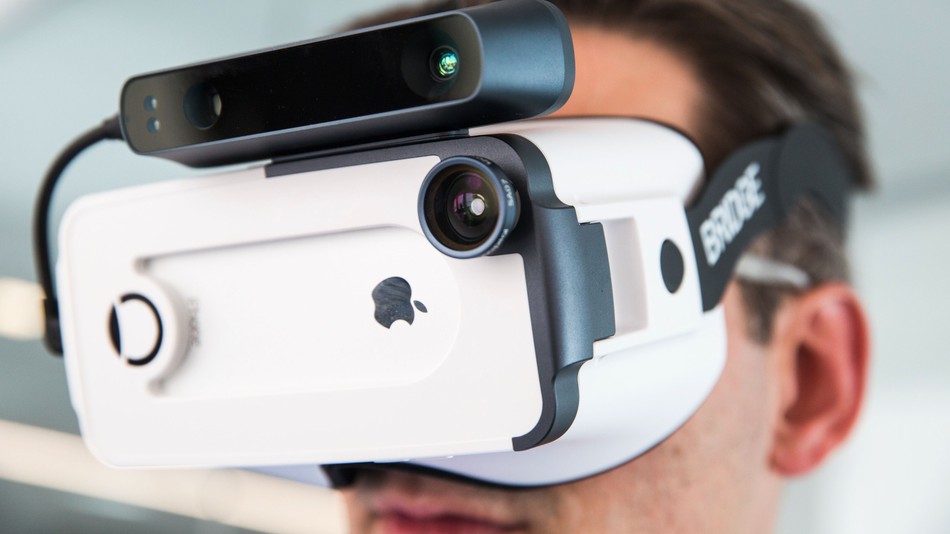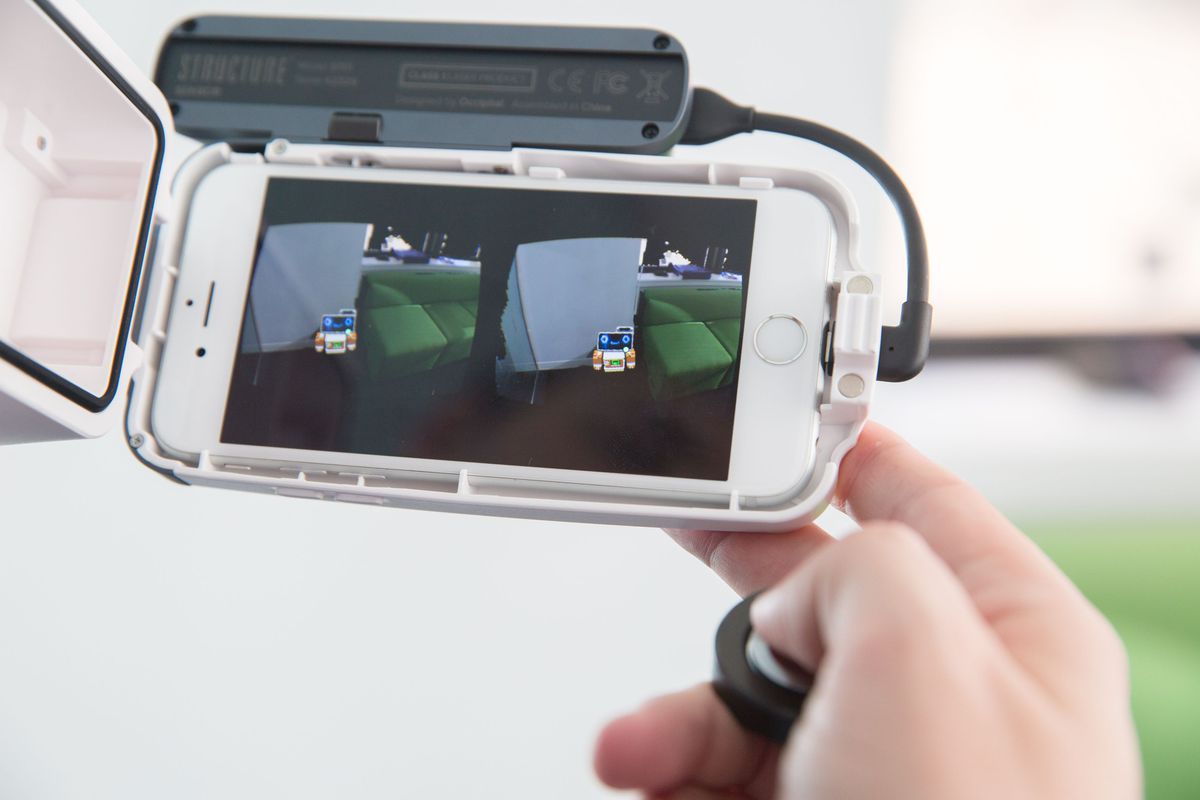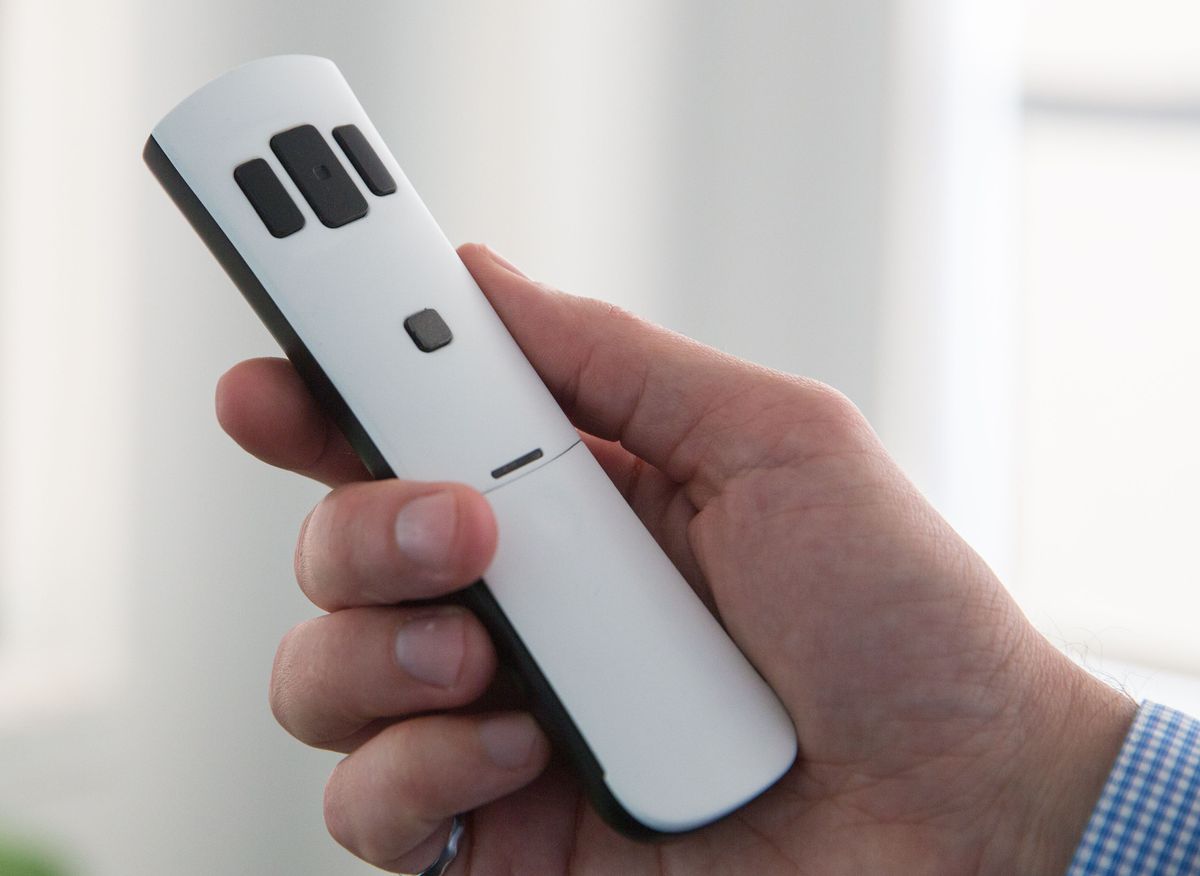It’s been rather difficult to experience good virtual reality on one of the most popular smartphones: the iPhone. Most VR headsets are not better than Google Cardboard, and even if they are impressive on other smartphones, pairing them with the iPhone gives you a mixed-reality experience that is pretty much worthless.

Startup Occipital saw a huge opportunity in VR with the iPhone. It took its Structure Sensor iPad accessory and developed it to take detailed, real-time scans of the room. The creators realized that if they built the sensor into a VR headset, that device would have room-scale VR capabilities, similar to the HTC Vive, in which virtual objects are not only mixed with the real world but could also interact with the viewer and environment.
As a result, the team at Occipital created the Bridge. It may look similar to one of those no-name VR headsets you can find on Amazon, as it’s white with black straps with a door in front that fits an iPhone 6 or 6S. But then you’ll notice the oblong sensor array sticking out from the front: the Structure Sensor, which powers the entire augmented-reality experience.
The Bridge begins by scanning the environment you’re in. Then the room appears on your screen as it would in reality, except the iPhone only displays the parts of the location you’ve scanned. The unscanned parts — typically what is in the background — are left as a gray void.
Additionally, Occipital created a robot character named Bridget that can interact with you and the room. You can tell Bridget to fetch a virtual object and she will go get it and avoid real-world furniture. You can ask her to seek out a power outlet for recharging and she will do so, even getting sad if any physical objects get in the way.

The interaction is done via a wireless controller similar to a mini Wiimote. To use it, tap a button and you will see a green dot that is a mouse cursor. You can use that to “click” on Bridget or any part of the environment.
The Bridge also lets users go full-on virtual. To do so, click on Bridget, and she will display a menu of five 3D objects. If you choose the one that looks similar to a person escaping, a large doorway opens in front of you. Step through it and you’re suddenly in a full virtual environment that looks like a futuristic observation deck.

The Bridge is compatible with VR and AR apps, and the developers can also build experiences with the headset’s exceptional spatial awareness, opening up the possibility of games or apps in which you can perform tasks with objects, a feature usually reserved for high-end VR capabilities.
The Bridge Explorer Edition, intended for developers, will ship in December 2016 for $499, while the consumer version is available in March 2017 for $399. Both come with the controller, but the explorer versions will ship it separately.
Via Mashable
Advertisement
Learn more about Electronic Products Magazine





